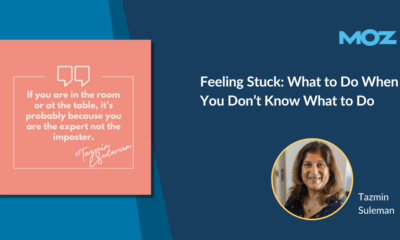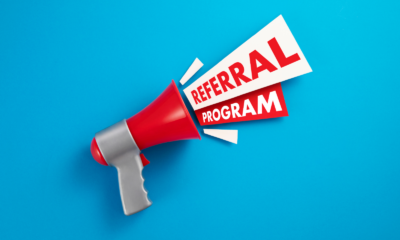SOCIAL
Is Musk’s DeSantis show a winning ticket for Twitter?

Florida Governor Ron DeSantis. – © AFP Patrick T. FALLON
Glenn CHAPMAN and Julie JAMMOT
By hosting Republican Ron DeSantis’s presidential campaign launch, Elon Musk sets up Twitter as a challenger to Fox News, but doubt remains that the right-wing pivot is a winning ticket for the platform.
DeSantis is considered a credible challenger to seizing the Republican nomination from frontrunner Donald Trump in the 2024 election, and his tie-up with Musk’s Twitter has generated buzz.
DeSantis’s choice of outlet for his Wednesday announcement follows news that ousted Fox News star Tucker Carlson will move his show to Twitter, and Daily Wire, a conservative news outlet, has also said Twitter will host its video and podcasts.
Musk has touted the events as his effort to turn Twitter into a marketplace of ideas and help turn his roller-coaster-ride buyout of the social media giant last year into a money-winning proposition.
“You’ve got to get people on the platform, you’ve got to get them spending time on the platform, you’ve got to get them to come back to the platform multiple times a day,” said Andrew Selepak, assistant media professor at the University of Florida.
“For Musk, he’s got to find big name users who will come and create content on Twitter.”
Ron DeSantis, the leading Republican rival to Donald Trump, will announce his 2024 US presidential bid during a live Twitter event with platform owner Elon Musk – Copyright AFP Julio Cesar AGUILAR
But the problem is that Musk is increasingly limiting himself to the right wing, which may scare away a chunk of advertisers that are willing to pay to display on Twitter.
“If it becomes an entirely right leaning platform, then yes, you would lose audience, you would lose advertising,” said Selepak.
– ‘I don’t care!’ –
Musk is being driven by two contradictory forces. On the one hand, he would like to see Twitter win him back his $44 billion investment and to do that he will have to keep advertisers on board.
But on the other hand, Musk wants to remain Musk.
Major advertisers fled in droves after his takeover, unimpressed by the tycoon’s mercurial behavior and the firing of thousands of people, many of whom scrubbed away bad content from Twitter.
Initially, Musk set out to do without them, plugging an amped-up subscription service that would compensate for the loss of revenue.
He also welcomed back banned accounts and shooed away the media establishment by branding top-tier news groups as state-affiliated media or removing authentication for the accounts of journalists and celebrities.
But with his push to build a subscriber base flailing, Musk tacitly admitted defeat by poaching Linda Yaccarino as CEO.
Yaccarino is one of the world’s best-respected ad executives, who built deep relationships with the world’s biggest brands as ad boss for NBCUniversal, the media group.
But Musk still firmly insists on maintaining his free-wheeling inclinations that can include dabbling in conspiracy theories and far right tropes.
Asked in a recent interview if he thought about the business consequences of his uncontrolled behavior online, a clearly provoked Musk answered: “I don’t care!”
– ‘Anything is achievable’ –
Musk’s critics believe that refusal to stay above the fray will deny him the trust of blue-chip advertisers.
“The people that Musk is bringing on board are among the most disturbingly bigoted forces on the right,” said Matt Gertz, senior fellow at the left-leaning Media Matters group.
“The Yaccarino hiring and this are contradictory — these are moves you make if you want to cultivate a subscriber base of far right extremists, not if you want to make money off of advertising,” Gertz said.
Others, however, point out that conservatives have managed to carve out a way to make big money from media.
“Profits have always been the priority …(and Musk) is tapping into a model that has been successful on talk radio and Fox News,” said Kathryn C. Brownell, assistant professor at Purdue University.
Moreover, Fox News dominance of US TV news is currently in a rough patch.
If it doesn’t work, Musk will more than likely have to fork out more money to back Twitter.
“Anything is achievable when you’re a billionaire in that regard. If he wants to pour another $40 billion into creating Twitter News, that’s the only way it could really work,” said Roy Gutterman, Syracuse University professor and director at the Tully Center for Free Speech.
“To have even a quasi news outlet, you’re still going to need a pretty costly infrastructure…Fox News didn’t develop overnight,” he added.
SOCIAL
Snapchat Explores New Messaging Retention Feature: A Game-Changer or Risky Move?

In a recent announcement, Snapchat revealed a groundbreaking update that challenges its traditional design ethos. The platform is experimenting with an option that allows users to defy the 24-hour auto-delete rule, a feature synonymous with Snapchat’s ephemeral messaging model.
The proposed change aims to introduce a “Never delete” option in messaging retention settings, aligning Snapchat more closely with conventional messaging apps. While this move may blur Snapchat’s distinctive selling point, Snap appears convinced of its necessity.
According to Snap, the decision stems from user feedback and a commitment to innovation based on user needs. The company aims to provide greater flexibility and control over conversations, catering to the preferences of its community.
Currently undergoing trials in select markets, the new feature empowers users to adjust retention settings on a conversation-by-conversation basis. Flexibility remains paramount, with participants able to modify settings within chats and receive in-chat notifications to ensure transparency.
Snapchat underscores that the default auto-delete feature will persist, reinforcing its design philosophy centered on ephemerality. However, with the app gaining traction as a primary messaging platform, the option offers users a means to preserve longer chat histories.
The update marks a pivotal moment for Snapchat, renowned for its disappearing message premise, especially popular among younger demographics. Retaining this focus has been pivotal to Snapchat’s identity, but the shift suggests a broader strategy aimed at diversifying its user base.
This strategy may appeal particularly to older demographics, potentially extending Snapchat’s relevance as users age. By emulating features of conventional messaging platforms, Snapchat seeks to enhance its appeal and broaden its reach.
Yet, the introduction of message retention poses questions about Snapchat’s uniqueness. While addressing user demands, the risk of diluting Snapchat’s distinctiveness looms large.
As Snapchat ventures into uncharted territory, the outcome of this experiment remains uncertain. Will message retention propel Snapchat to new heights, or will it compromise the platform’s uniqueness?
Only time will tell.
SOCIAL
Catering to specific audience boosts your business, says accountant turned coach

While it is tempting to try to appeal to a broad audience, the founder of alcohol-free coaching service Just the Tonic, Sandra Parker, believes the best thing you can do for your business is focus on your niche. Here’s how she did just that.
When running a business, reaching out to as many clients as possible can be tempting. But it also risks making your marketing “too generic,” warns Sandra Parker, the founder of Just The Tonic Coaching.
“From the very start of my business, I knew exactly who I could help and who I couldn’t,” Parker told My Biggest Lessons.
Parker struggled with alcohol dependence as a young professional. Today, her business targets high-achieving individuals who face challenges similar to those she had early in her career.
“I understand their frustrations, I understand their fears, and I understand their coping mechanisms and the stories they’re telling themselves,” Parker said. “Because of that, I’m able to market very effectively, to speak in a language that they understand, and am able to reach them.”Â
“I believe that it’s really important that you know exactly who your customer or your client is, and you target them, and you resist the temptation to make your marketing too generic to try and reach everyone,” she explained.
“If you speak specifically to your target clients, you will reach them, and I believe that’s the way that you’re going to be more successful.
Watch the video for more of Sandra Parker’s biggest lessons.
SOCIAL
Instagram Tests Live-Stream Games to Enhance Engagement

Instagram’s testing out some new options to help spice up your live-streams in the app, with some live broadcasters now able to select a game that they can play with viewers in-stream.
As you can see in these example screens, posted by Ahmed Ghanem, some creators now have the option to play either “This or That”, a question and answer prompt that you can share with your viewers, or “Trivia”, to generate more engagement within your IG live-streams.
That could be a simple way to spark more conversation and interaction, which could then lead into further engagement opportunities from your live audience.
Meta’s been exploring more ways to make live-streaming a bigger consideration for IG creators, with a view to live-streams potentially catching on with more users.
That includes the gradual expansion of its “Stars” live-stream donation program, giving more creators in more regions a means to accept donations from live-stream viewers, while back in December, Instagram also added some new options to make it easier to go live using third-party tools via desktop PCs.
Live streaming has been a major shift in China, where shopping live-streams, in particular, have led to massive opportunities for streaming platforms. They haven’t caught on in the same way in Western regions, but as TikTok and YouTube look to push live-stream adoption, there is still a chance that they will become a much bigger element in future.
Which is why IG is also trying to stay in touch, and add more ways for its creators to engage via streams. Live-stream games is another element within this, which could make this a better community-building, and potentially sales-driving option.
We’ve asked Instagram for more information on this test, and we’ll update this post if/when we hear back.
-

 PPC6 days ago
PPC6 days agoHow 6 SEO Experts Are Navigating Google Update Chaos
-

 SEARCHENGINES6 days ago
SEARCHENGINES6 days agoBing Search Testing Removing Cache Link From Search Results
-

 MARKETING6 days ago
MARKETING6 days ago60 Remote Work Stats to Know in 2024
-

 WORDPRESS5 days ago
WORDPRESS5 days ago10 WordPress Influencers to Follow in 2024 – WordPress.com News
-

 WORDPRESS6 days ago
WORDPRESS6 days ago8 Best WordPress Migration Services (Compared)
-

 MARKETING5 days ago
MARKETING5 days agoFeeling Stuck: What to Do When You Don’t Know What to Do
-

 SEO7 days ago
SEO7 days agoGoogle Explains How It Chooses Canonical Webpages
-

 SEARCHENGINES4 days ago
SEARCHENGINES4 days agoMore Google March 2024 Core Update Ranking Volatility













